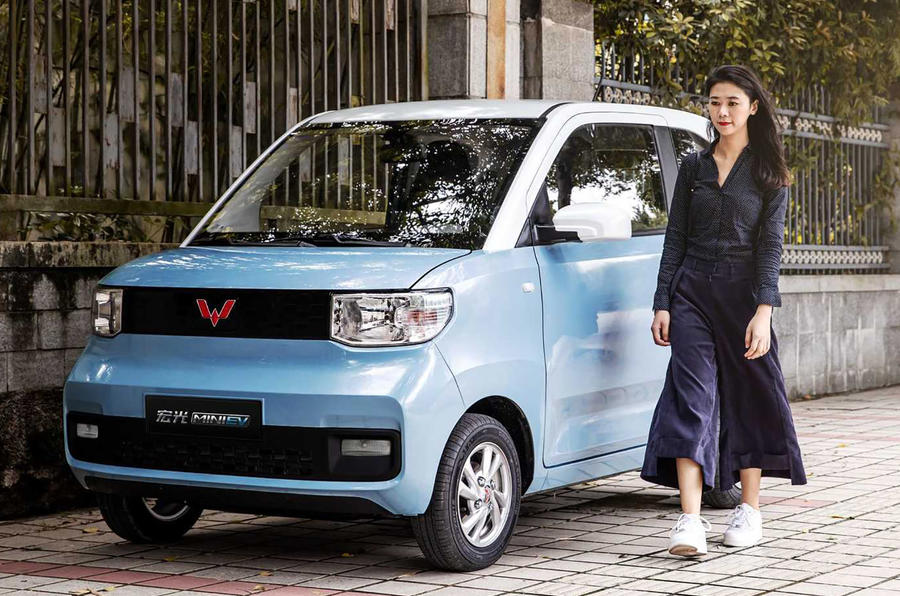While China emerged from a pandemic-ravaged 2020 stronger than most, one of the few blips was a relatively modest 8% year-on-year growth in electric vehicle registrations. A total of 1.3 million was not bad given the challenges – 41% of the global total, according to analysts Canalys – but it’s pretty muted against the worldwide growth rate of 39%.
It matters because China, with 30% of all car sales of any kind in 2020, has a critical role in driving EV uptake and providing car makers with a return on their investment.
China’s pre-eminence is down to its leaders having long planned to pounce on electrification, largely motivated by the chance to wean off a reliance on imported oil. However, slipping behind Europe (42% market share of all EV sales) was not on the agenda. A growth rate of 50% is expected this year, taking the EV market share in the region closer to 10%. For comparison, EVs accounted for 4.2% of all 2020 global registrations.
To receive the latest industry news, please click here to sign up to the Autocar Business newsletter
Clues as to where further growth will come from in China are evident in last year’s sales figures, where there were only two standout performers. Early in the year, the locally built Tesla Model 3 dominated sales. This year, more growth is expected to follow the launch of the domestically built Model Y.
But the real star was the Hongguang Mini EV, which was launched mid-year and has kick-started a trend for small, affordable urban EVs that is set to transform the market, supersizing sales first in the mega-cities of Shanghai and Beijing and then the other 685 cities around which so much of Chinese life now revolves.
A joint production by SAIC, Wuling and General Motors, the Hongguang’s standout feature is its £3200 price, despite having a battery with a range of more than 100 miles, a top speed of 62mph and room – just – for four people.
Anti-lock brakes and tyre pressure monitors are standard, and if you push your budget closer to £4000, rear parking sensors and air-con feature. Locals have embraced it as a cool take on modern motoring and sales have boomed into 2021.
The significance is twofold. First, the trend is here to stay. Expect to hear more on the Baojun E-Series and Ora R1, the world’s cheapest EV, in the coming months. Compact but capable EVs are set to change cityscapes rapidly.
Second, exports to other countries begin soon, with Europe and the US on the agenda. You might look at it and laugh, but expect pressure to grow to mandate uptake in big cities the world over as concerns over congestion and pollution continue to rise.
READ MORE





Join the debate
Add your comment
Not really the sort of car most OEM's want to sell. For the same profit you can sell 10 of these or 1 large electric SUV. Part of what is behind these small EV's in china is a quirk of the chinese fuel economy regulations where OEM's get credits for sellling EV's whatever size they are. Chinese government is closing this loophole soon and then these small range EV's won't make any sense for OEM's so they may well disappear again
I think that calling it the Mini EV is more than a coincidence - while it might at first glance not look much like one arguably it is what an electric Mini would look like based on the design concepts of its 1959 predecessor and modern day requirements, eg 2 doors, small wheels and ingenious space utilisation. Even the dashboard switch panel looks familiar...
With Renault backing I'd like to think Dacia could get a passable result for the Spring, I'm not so sure about these ultra budget Chinese EVs though. I also wonder whether there would be appetite for a budget Chinese car in the UK or Europe.
The Dacia Spring is a Renault Kwid. Despite Renault's backing the Kwid achieved 0 stars in recent NCAP test. It's a death trap.
I doubt it will be any worse than a French microcar; possibly, a fair bit better. When the Chinese decide to come to Europe and get their product right, be afraid. Be very afraid.